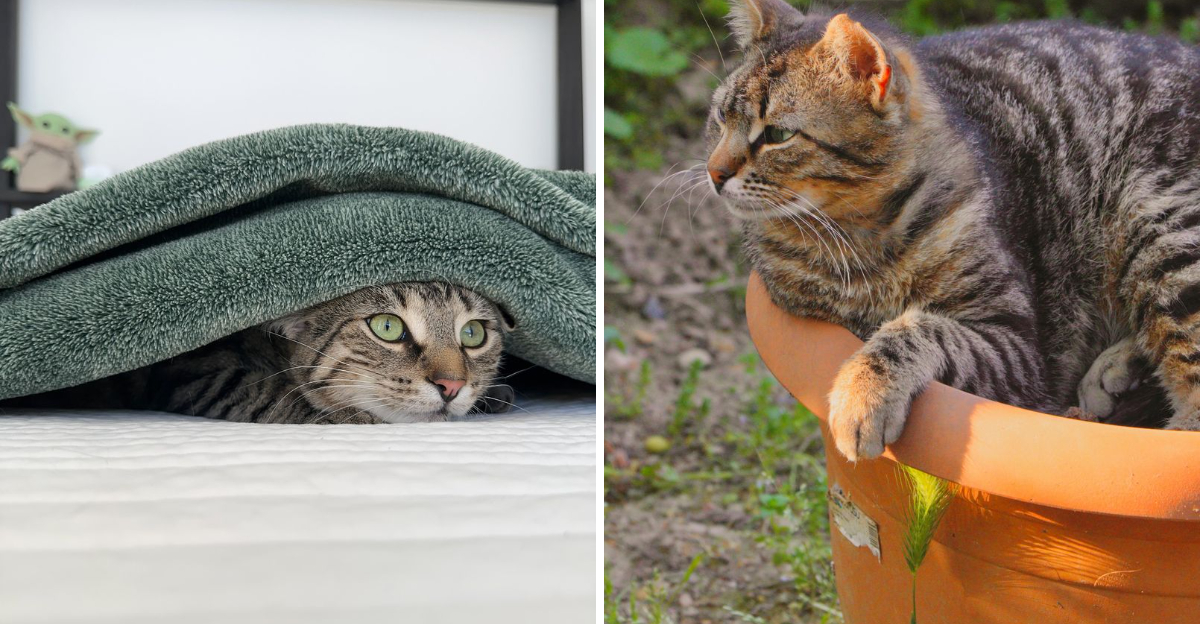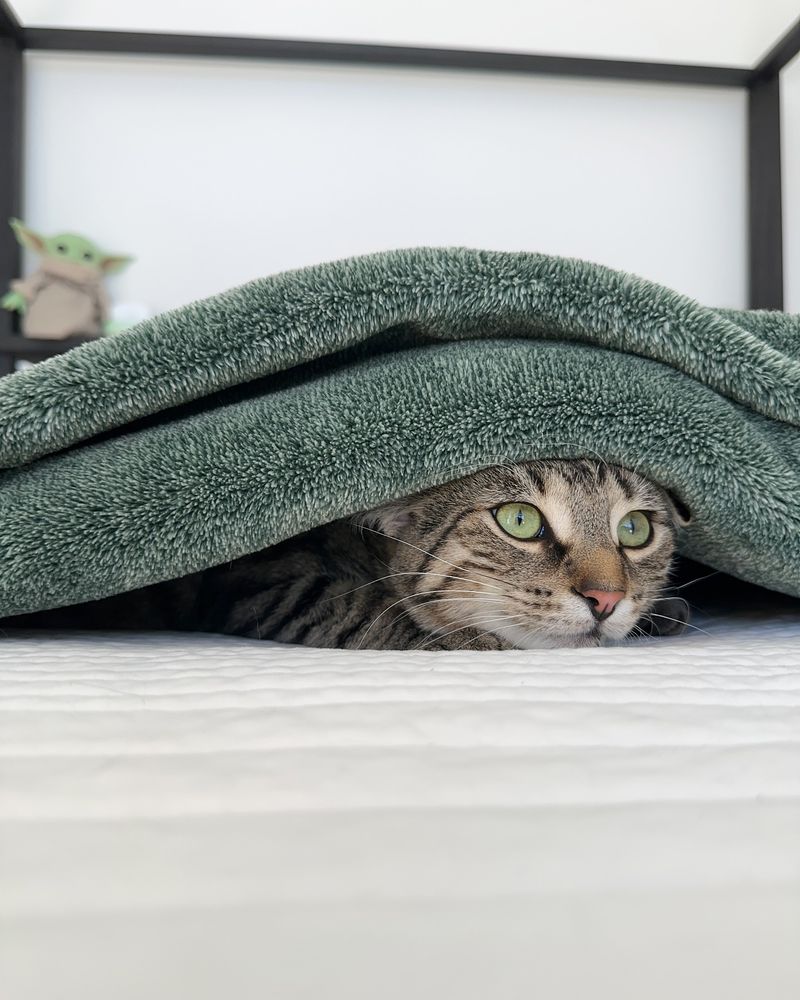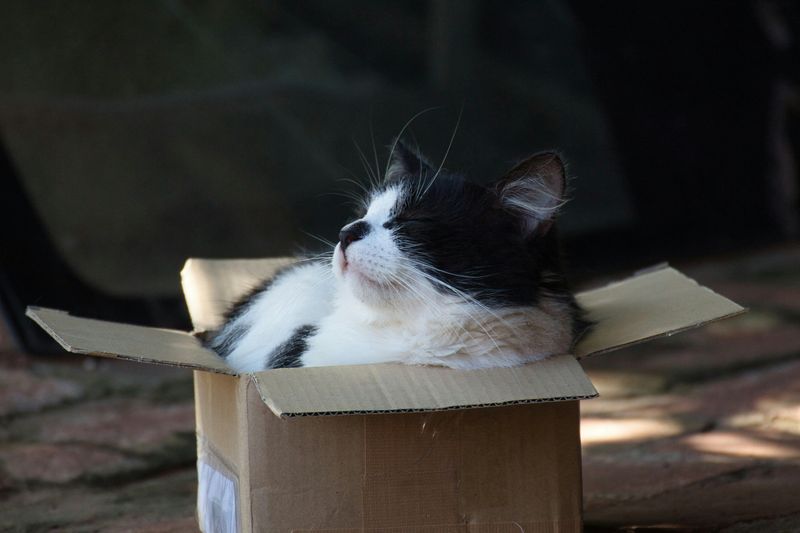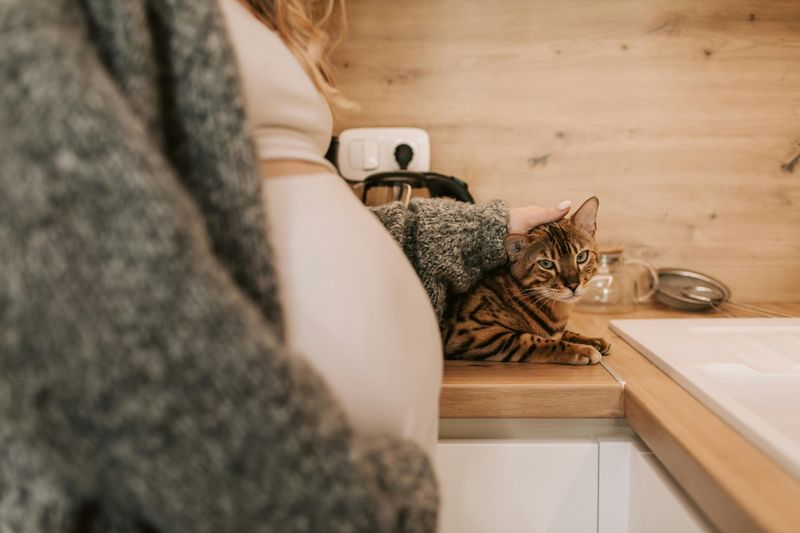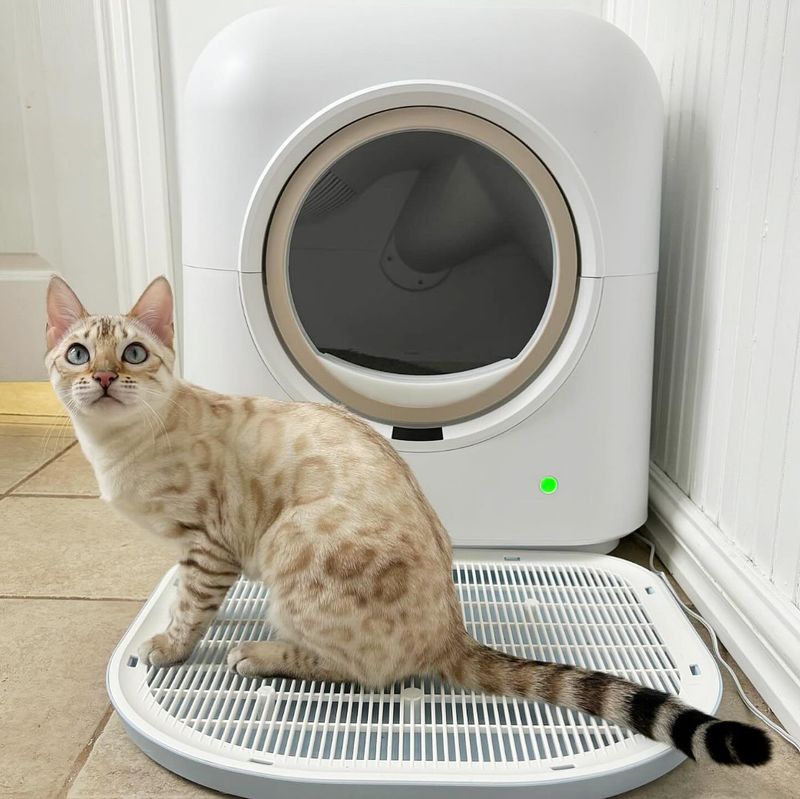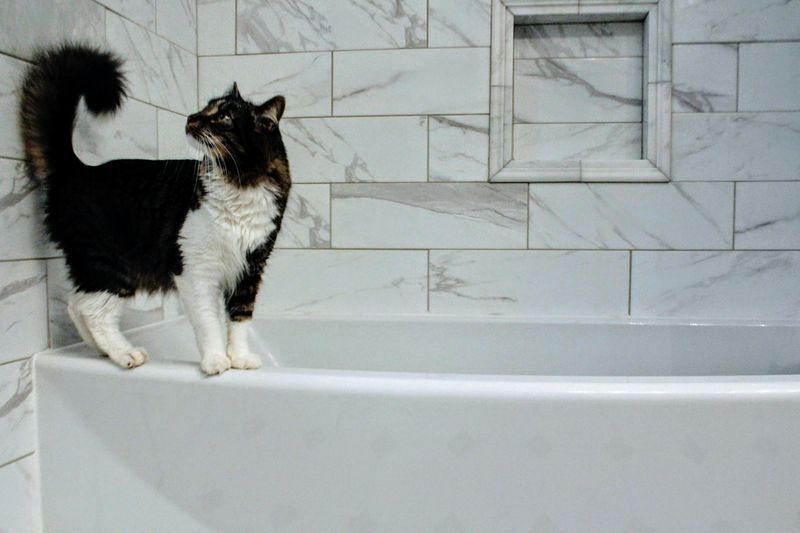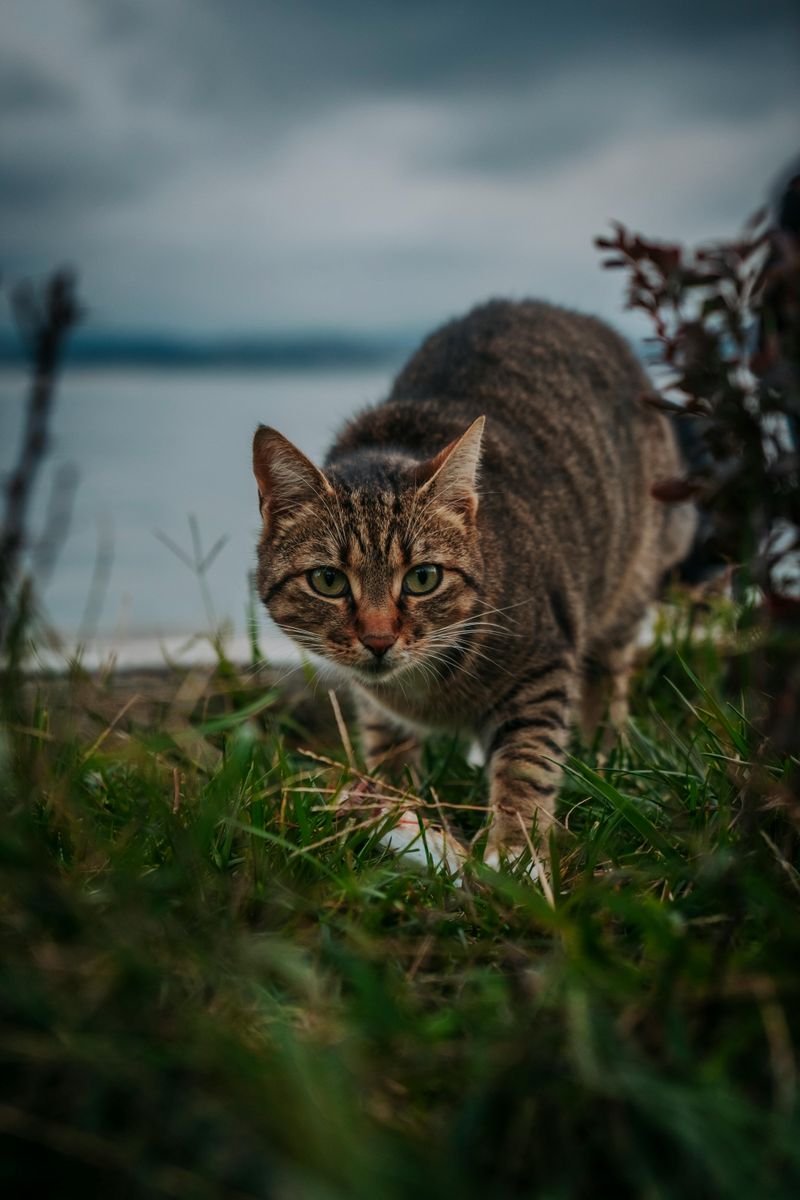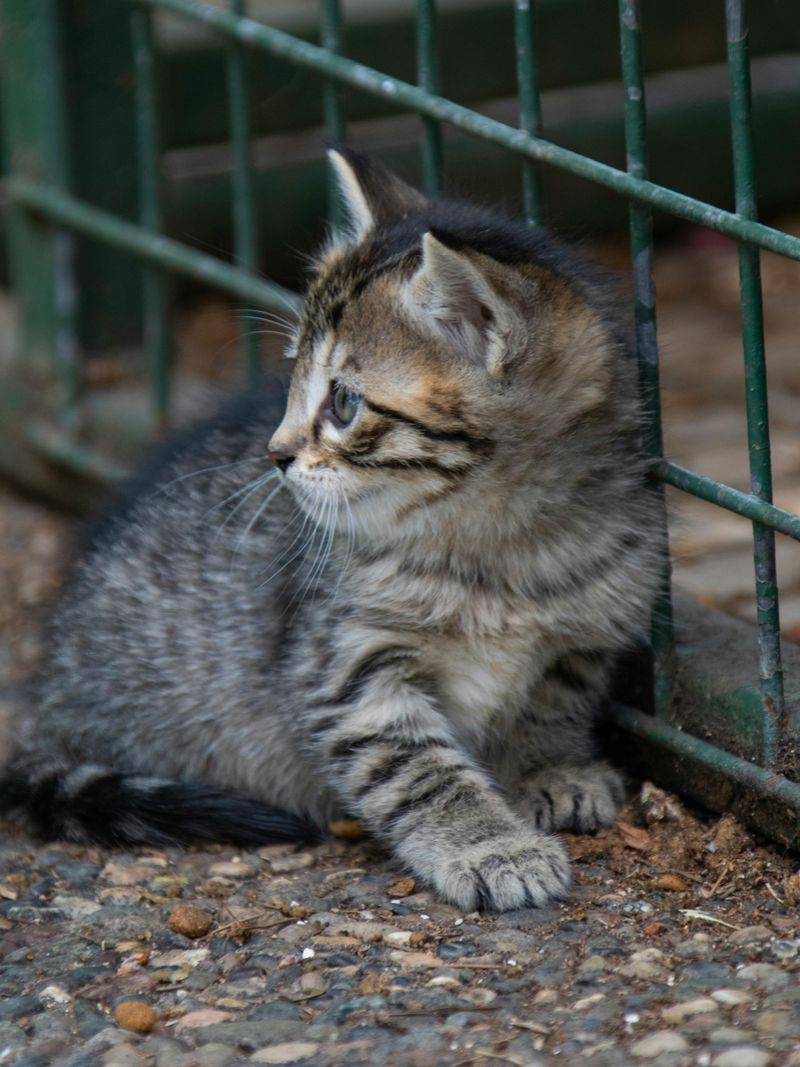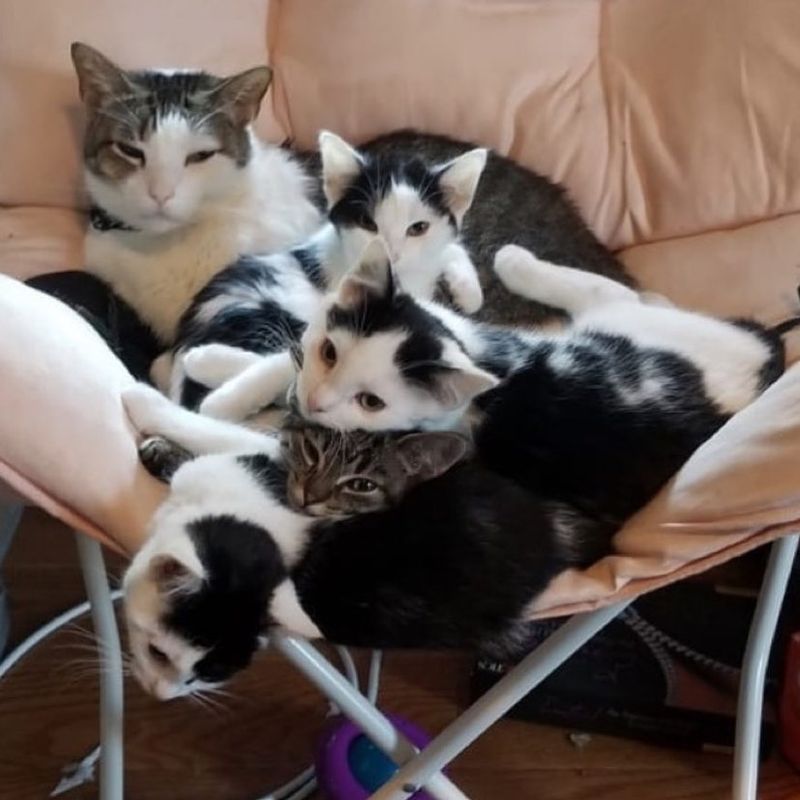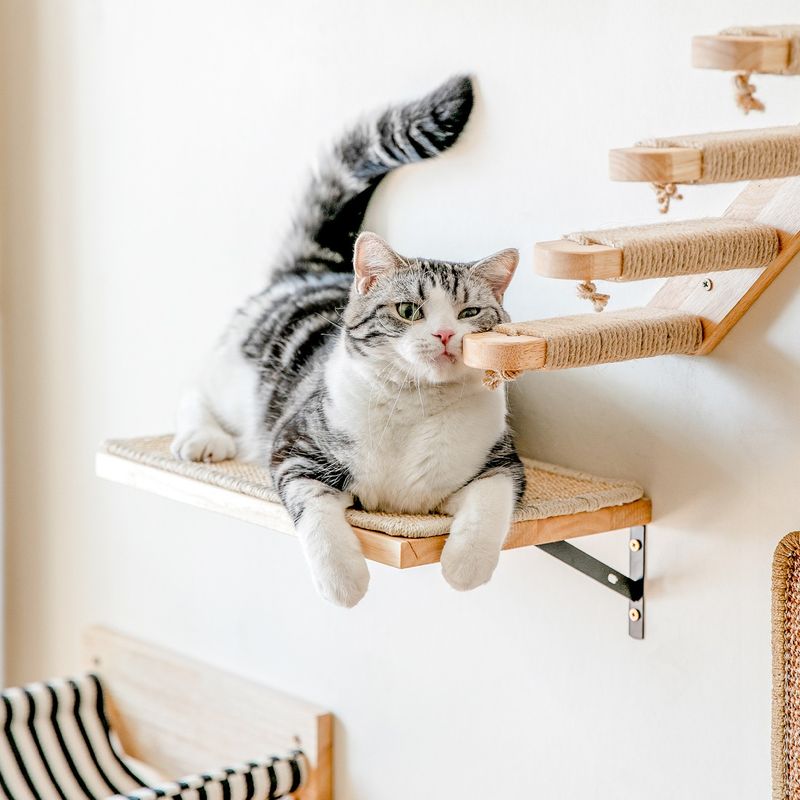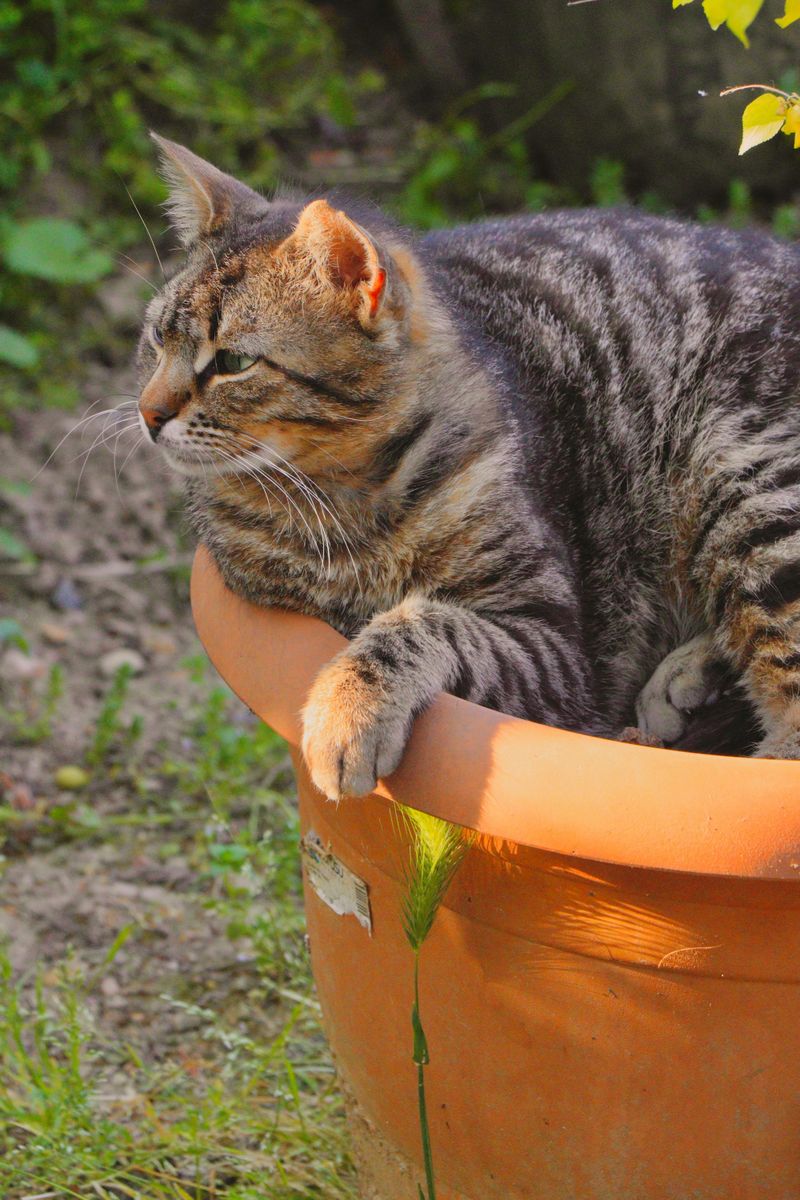📖 Table of Content:
- 1. Indoor: The 3 AM Zoomies
- 2. Indoor: Box Obsession
- 3. Indoor: Counter Surfing Adventures
- 4. Indoor: The Litterbox Victory Lap
- 5. Indoor: Intense Window Watching
- 6. Indoor: Paper and Laptop Occupation
- 7. Indoor: The Sudden Bathroom Escort Service
- 8. Outdoor: Dawn Hunting Expeditions
- 9. Outdoor: Territorial Spray Marking
- 10. Outdoor: Social Colony Dynamics
- 11. Outdoor: Tree-Climbing Escapades
- 12. Outdoor: Weather Adaptation Strategies
Cats may sleep for most of the day, but when they’re awake, they’re masters of surprise. Whether you’re watching your house cat dive into a cardboard box or spotting a sleek outdoor feline perched high in a tree, their behaviors are full of quirks, instincts, and hidden meanings. But did you know many of these actions are shaped by where they live?
Indoor cats and outdoor cats might share the same species, but their worlds are completely different. While house cats invent creative ways to stay entertained in cozy, enclosed environments, outdoor cats navigate nature’s wild terrain with ancient survival instincts still intact. From window watching to hunting at dawn, each lifestyle creates a unique behavioral blueprint.
Understanding how a cat’s environment shapes its habits doesn’t just make for fun trivia—it deepens our appreciation for their adaptability, intelligence, and emotional complexity. Whether you live with a curtain-climber or a fearless explorer, these behaviors tell a fascinating story about how cats balance instinct and experience, wherever they call home.
1. Indoor: The 3 AM Zoomies
Ever been jolted awake by the sound of tiny paws racing across your home at an ungodly hour? Indoor cats are famous for their midnight marathons, tearing through hallways and bouncing off furniture like furry pinballs.
Scientists believe these bursts of energy happen because domestic cats still follow their wild ancestors’ hunting schedules. Without outdoor hunting opportunities, that energy gets channeled into frantic sprints around your living room.
Most house cats will eventually outgrow extreme zoomies, but many maintain this quirky behavior throughout their lives. Providing interactive playtime before bed might help reduce these nocturnal NASCAR impressions.
2. Indoor: Box Obsession
Spend hundreds on fancy cat furniture only to find your feline friend ignoring it for an empty Amazon box! This universal indoor cat behavior puzzles many pet parents, but makes perfect sense to your kitty.
Boxes provide security and comfort – tight spaces where cats can hide while still observing their surroundings. The cardboard also offers insulation, maintaining a cozy temperature that’s typically 10-15 degrees warmer than room temperature.
Research from Dutch scientists even found that shelter cats given boxes showed significantly lower stress levels than those without. Next time you’re about to recycle that package, consider letting your cat enjoy their natural habitat first!
3. Indoor: Counter Surfing Adventures
Walk into any cat owner’s kitchen and you’ll likely spot paw prints in places no paw should be. Indoor cats become expert countertop explorers, defying gravity and house rules with equal enthusiasm.
This behavior stems from their natural instinct to seek high vantage points for safety and hunting. From elevated positions, cats can survey their territory while feeling secure from potential threats. Unfortunately, this often means knocking over your water glass or sampling tomorrow’s dinner ingredients.
Many cat owners eventually surrender to this behavior after failed attempts at training. Some clever folks install cat shelves around their homes, giving their pets designated high places to perch without disturbing cooking areas.
4. Indoor: The Litterbox Victory Lap
Among the most puzzling indoor cat behaviors is the post-bathroom sprint. After using the litterbox, many cats suddenly bolt through the house like they’re fleeing a crime scene!
Animal behaviorists suggest this peculiar dash might be an instinctive attempt to escape predators that could detect their scent. In the wild, waste makes cats vulnerable by advertising their location. Your pampered housecat doesn’t face these dangers, but the instinct remains.
Other theories involve feelings of relief or a celebration of successful territory marking. Whatever the reason, this bizarre victory lap ranks among the most universally recognized indoor cat quirks that leave owners simultaneously confused and amused.
5. Indoor: Intense Window Watching
Indoor cats often develop an almost obsessive relationship with windows. They’ll spend hours chattering at birds, tracking falling leaves, or simply soaking up sunshine patches with laser-focused attention.
Windows serve as natural television for house-bound felines, providing essential environmental enrichment. The moving objects outside stimulate their hunting instincts while keeping them safely indoors. Many cats establish regular window-watching routines, appearing at their favorite sill at specific times each day.
Smart cat owners enhance this experience by placing bird feeders within view or setting up comfortable window perches. This simple entertainment helps prevent boredom and keeps indoor cats mentally stimulated without risking the dangers of outdoor adventures.
6. Indoor: Paper and Laptop Occupation
Attempting to work from home with a cat means accepting one universal truth: if you need it, they’ll sit on it. Indoor cats demonstrate an uncanny ability to target precisely what you’re using, whether it’s important paperwork, an open laptop, or the book you’re reading.
This behavior isn’t just annoying – it’s actually a form of social bonding. Cats seek out items that carry your scent and attention. By sitting on your work materials, they’re inserting themselves into your focus and marking these objects with their own scent.
Some experts also suggest the warmth of electronics attracts cats, especially laptops with their cozy keyboard temperatures. Whatever the motivation, expect your indoor cat to claim your workspace regularly.
7. Indoor: The Sudden Bathroom Escort Service
One moment you’re alone, the next you have a feline bathroom attendant! Indoor cats often develop an unusual fascination with following their humans to the bathroom, sometimes even pawing under the door if left outside.
This peculiar behavior stems from several possible motivations. Cats are naturally curious creatures, and closed doors represent mystery and potential danger in their territory. Additionally, you’re captive in the bathroom – making it the perfect opportunity for undivided attention!
Many indoor cats also see bathroom routines as part of social bonding. In cat colonies, members often stay close while vulnerable, offering protection. Your cat might simply be returning the favor by guarding you during your private moments!
8. Outdoor: Dawn Hunting Expeditions
Outdoor cats embrace their wild side with early morning hunting missions. As the first light breaks, these natural predators slip through dewy grass stalking birds, mice, and other small creatures when they’re most active and vulnerable.
Unlike their indoor counterparts who merely watch prey through windows, outdoor cats engage their full hunting sequence – stalking, pouncing, and sometimes bringing home their trophies. This behavior fulfills deep-seated instincts and provides crucial mental stimulation.
Cat owners who allow outdoor access often find themselves receiving unwanted “gifts” left by their proud hunters. While concerning for wildlife conservation, this behavior demonstrates how outdoor cats maintain connections to their evolutionary past despite domestication.
9. Outdoor: Territorial Spray Marking
While indoor cats might occasionally spray due to stress, outdoor cats elevate this behavior to an art form. Unaltered male cats particularly excel at marking their territory by spraying strong-smelling urine on vertical surfaces throughout their domain.
This potent communication system tells other cats critical information about who owns the territory, when they last patrolled, and even their reproductive status. Each spray contains a unique chemical signature as distinctive as a fingerprint.
Outdoor cats establish elaborate territorial networks through these scent markers, often refreshing key boundary points daily. Indoor cats rarely develop such complex marking systems since they face limited territorial challenges and are typically neutered, reducing hormonal driving factors.
10. Outdoor: Social Colony Dynamics
Contrary to popular belief that cats are solitary creatures, outdoor felines often form complex social structures. Feral and free-roaming cats establish colonies with fascinating hierarchies, alliances, and communal kitten-raising practices.
These outdoor cat societies feature intricate relationships where related females may share hunting grounds and babysitting duties. Dominant cats enjoy prime sleeping spots and first access to food sources, while lower-ranking members adapt their schedules to avoid confrontation.
Indoor cats rarely develop such elaborate social networks, typically forming one-on-one bonds with human caregivers instead. The sophisticated group dynamics of outdoor cat colonies represent one of the most striking differences between indoor and outdoor feline lifestyles.
11. Outdoor: Tree-Climbing Escapades
Indoor cats might scale your curtains, but outdoor cats showcase truly impressive climbing abilities. With retractable claws perfectly designed for gripping bark, outdoor felines regularly ascend trees to hunt birds, escape threats, or simply enjoy superior vantage points.
These natural climbers can rotate their ankles nearly 180 degrees, allowing them to descend headfirst by digging their back claws into the trunk. Despite this adaptation, many outdoor cats occasionally find themselves stranded in tall trees when fear overcomes their descent abilities.
Climbing represents a crucial survival skill for outdoor cats, providing access to prey and escape routes from larger predators. Indoor cats rarely develop the confidence and technique for efficient vertical navigation that their outdoor counterparts master through regular practice.
12. Outdoor: Weather Adaptation Strategies
While indoor cats might hide under blankets during thunderstorms, outdoor cats develop sophisticated strategies for handling nature’s challenges. These resilient animals create seasonal shelters, adjusting their routines based on weather patterns.
During winter, outdoor cats grow thicker coats and seek insulated hiding spots like hay bales or abandoned structures. They curl tightly to conserve body heat and may even share warmth with other colony members despite typical territorial boundaries.
Summer brings different adaptations as outdoor cats become more nocturnal, hunting during cooler evening hours and finding shaded rest spots during intense midday heat. This remarkable environmental flexibility showcases the adaptive intelligence that indoor cats rarely need to develop.
